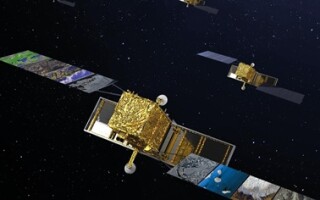Military Embedded Systems

Thierry Wastiaux
Interface Concept
Avionics
-
YFQ-48A designation assigned to Project Talon semi-autonomous prototype aircraft
December 23, 2025
-
Rotorcraft sim & pilot training partnership formed by HAVELSAN, Advanced Rotorcraft Technology
December 22, 2025
-
Airbus helicopters to be ordered for Spanish Armed Forces under National Helicopter Plan
December 19, 2025
-
Sea Tiger anti-submarine warfare helicopter delivered to German Navy by NHIndustries
December 17, 2025
-
Radar, optical sensors for armored vehicles nabs ELTA a series of contracts
December 17, 2025
-
IFF systems from BAE Systems will be used on South Korean fighter jets
December 16, 2025
-
PRODUCT OF THE WEEK: Annapolis Micro Systems WILDSTAR 6U OpenVPX switch
December 15, 2025
-
SPEXER 2000 radar selected for Rheinmetall air defence systems
December 15, 2025
A.I.
-
AI accelerator card under development for in-orbit applications
December 12, 2025
-
GUEST BLOG: AI-powered transformations ahead -- three predictions for 2026
December 12, 2025
-
GUEST BLOG: The next innovation in AI for defense -- autonomous purple teaming
December 12, 2025
-
DISA chief to industry: 'your system is not interesting' without data sharing
December 11, 2025
Comms
-
RCH155 wheeled howitzers ordered for German Armed Forces
December 23, 2025
-
Maritime SATCOM systems to be supplied for NATO by Orbit
December 23, 2025
-
200 Puma infantry fighting vehicles to be procured for German Bundeswehr through PSM
December 22, 2025
-
Disk-shaped satellites lift off in NASA, Space Force experiment
December 18, 2025





